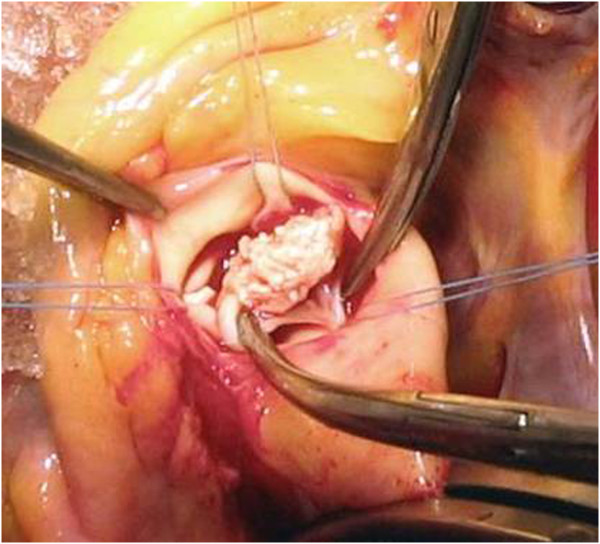Playlist
Show Playlist
Hide Playlist
Infective Endocarditis (IE): Etiology
-
Slides InfectiveEndocarditis InfectiousDiseases.pdf
-
Download Lecture Overview
00:01 Let’s now talk about the bugs that cause endocarditis in a little more detail. About 80% of endocarditis is due to one of these, streptococci or staphylococci and at varying proportions depending upon whether it’s a native valve or a prosthetic valve, what the source of the infection is. For example, if it follows some kind of dental procedure then it’s more likely to be a streptococcus. On the other hand, if it follows the drainage, incision and drainage of a boil, a furuncle, it’s more likely to be staph. 00:46 It also is somewhat dependent on the patient’s age and coexisting conditions. Another issue that we have to deal with in infective endocarditis is that of culture-negative endocarditis. 01:09 We know clinically for example that the patient has endocarditis but when we draw blood cultures, they’re negative. That accounts for at least 10% of the cases of infective endocarditis. 01:24 What would be the explanation for you to have bugs on your heart valve? They should be flapping in the bloodstream breeze. All blood cultures should be positive virtually but yet, the blood cultures are negative. What would explain that? Well, giving antibiotics before the diagnosis is made. 01:47 Unfortunately, patients will go to the doctor complaining of fever. What many physicians do is they treat fever with antibiotics. Not all fevers should be treated with antibiotics. Just doctor to doctor, if that’s all the patient has when they come to see you then let’s find out the cause of the fever rather than shoot antibiotics at it. That’s one explanation for culture-negative endocarditis. 02:23 The other explanation for culture-negative endocarditis is a group of fastidious organisms, organisms that don’t grow easily in the microbiology lab, some that actually take weeks. 02:38 By the way, if you do suspect one of those organisms, you should call the microbiology lab and say, “I’m worried about a slow-growing organism. Would you hold the blood cultures for the next several weeks? We have a patient that might have endocarditis and it’s important.” Because the blood cultures, after seven days and if they’re negative in the routine microbiology labs are discarded and called negative. 03:09 Examples of this would be Bartonella, Brucella, actually a zoonosis, so it’s very important to take a history about what the occupation of the patient is. If it’s somebody who works in an abattoir, I bet you don’t know what an abattoir is, an abattoir is a slaughterhouse. Those people who work there are prone to picking up Brucella infections. Coxiella burnetii is a cause of Q fever. 03:53 Chlamydophila psittaci, the cause of psittacosis, these are intracellular organisms that are very difficult to grow and difficult to demonstrate. Then there’s the HACEK group of organisms. These are a group of gram-negative, pleomorphic, coccobacilli that are fastidious in their growth and they include Haemophilus species. There’s one actually that’s got the name Haemophilus aphrophilus. 04:25 I absolutely love that name. Then there’s Aggregatibacterium formerly called Actinobacillus. In fact, its former name was Actinobacillus actinomycetemcomitans. That’s why I went into infectious diseases. 04:40 Then there’s Cardiobacter for the C, Eikenella corrodens, and Kingella species. We’ve discovered in the last 30 years that Whipple’s disease is actually an infectious disease and Tropheryma whipplei can, on rare occasions, cause infective endocarditis. Don’t ask me if I’ve ever seen a patient with Tropheryma whipplei endocarditis but I’m waiting.
About the Lecture
The lecture Infective Endocarditis (IE): Etiology by John Fisher, MD is from the course Cardiovascular Infections.
Included Quiz Questions
Which of the following organisms is most likely to cause infective endocarditis with negative blood cultures?
- Coxiella burnetii
- Staphylococcus aureus
- Viridans streptococci
- Community-acquired enterococci
- Streptococcus sanguis
Which of the following causes of infective endocarditis is NOT a member of the HACEK group?
- Chlamydia
- Haemophilus
- Aggregatibacter
- Cardiobacterium
- Eikenella
Which of the following organisms is NOT a common cause of early or late prosthetic valve endocarditis?
- Neisseria gonorrhoeae
- Staphylococcus epidermidis
- Streptococcus mutans
- Staphylococcus aureus
- Streptococcus sanguinis
A 71-year-old man comes to the physician because of fever, myalgias, low back pain, and increasing dyspnea on exertion for 10 days. Six weeks ago, he underwent aortic valve replacement for calcific aortic stenosis. On physical examination, he is pale and ill-appearing. A systolic ejection murmur which radiates into the carotids is present and inspiratory rales are audible at both lung bases. Four of four blood cultures are positive and aortic valve vegetations are present on echocardiography consistent with endocarditis. While many organisms could be associated, which of the following organisms is the most likely cause?
- Staphylococcus epidermidis
- Brucella melitensis
- Enterococcus faecium
- Coxiella burnettii
- Viridans streptococci
Customer reviews
5,0 of 5 stars
| 5 Stars |
|
5 |
| 4 Stars |
|
0 |
| 3 Stars |
|
0 |
| 2 Stars |
|
0 |
| 1 Star |
|
0 |






